 NEWS: Action needed to reap wind power’s billions in S.C., experts say
NEWS: Action needed to reap wind power’s billions in S.C., experts say
BRIEFS: Few items struck from state budget, other updates
COMMENTARY, Brack: A hotter South Carolina has some steamy policy impacts
SPOTLIGHT: S.C. Farm Bureau
FEEDBACK: Brack nailed it on a budget gimmick
MYSTERY PHOTO: Two-story house
S.C. ENCYCLOPEDIA: Tobacco barns
NEWSBIG STORY: Action needed to reap wind power’s billions in S.C., experts say
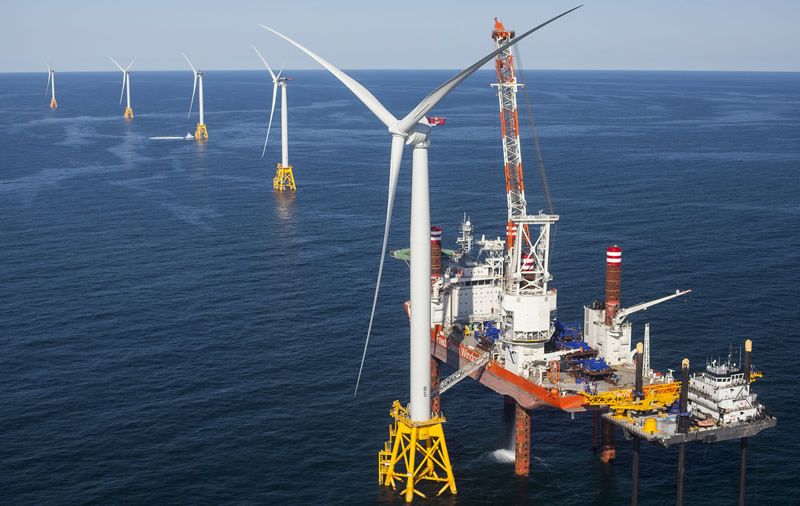
By Lindsay Street, Statehouse correspondent | South Carolina tops a national list for potential in an emerging industry that could bring in thousands of jobs and provide cheap electricity, but developers aren’t lining up.
Offshore shore wind-generated power will need more action from the state, experts say. And if legislators take action, they could secure a stake in a new industry could be worth $70 billion annually and bring thousands of new jobs in the Palmetto State.
“The wind speed down there is great but the state right now doesn’t have favorable policies that will tell the industry this is a place where there will be an offshore wind project,” University of Delaware’s Special Initiative on Offshore Wind Director Stephanie McClellan said.
Six Atlantic states have lined up about 18 gigawatts of offshore wind generation. The resurgence of wind power in America is piggybacking on European research and development that has driven the cost of renewable source into the same affordability range as solar.
“It is the moment we’ve all been waiting for,” McClellan said.
But shovels aren’t poised in South Carolina, according to Southeastern Wind Coalition Atlantic Region Manager Adam Forrer.
Forrer said South Carolina could gain millions of dollars in additional tax revenues and add thousands of new jobs. McClellan penned a report, released earlier this year, that predicted offshore wind and its supporting industries could be a $70 billion sector for funding projects alone. A 2012 Clemson University study said 3,800 direct jobs could be created by a 1,000-megawatt offshore wind farm in the state.
Two 2016 studies highlight South Carolina among favorable states for large-scale projects. A report from the National Renewable Energy Laboratory said South Carolina’s offshore wind potential is more than seven times higher than the state’s current electricity use. Another report, “Offshore Wind Energy Resource Assessment for the United States,” listed South Carolina sixth for offshore wind potential nationally and fifth for its potential in relation to its energy consumption.
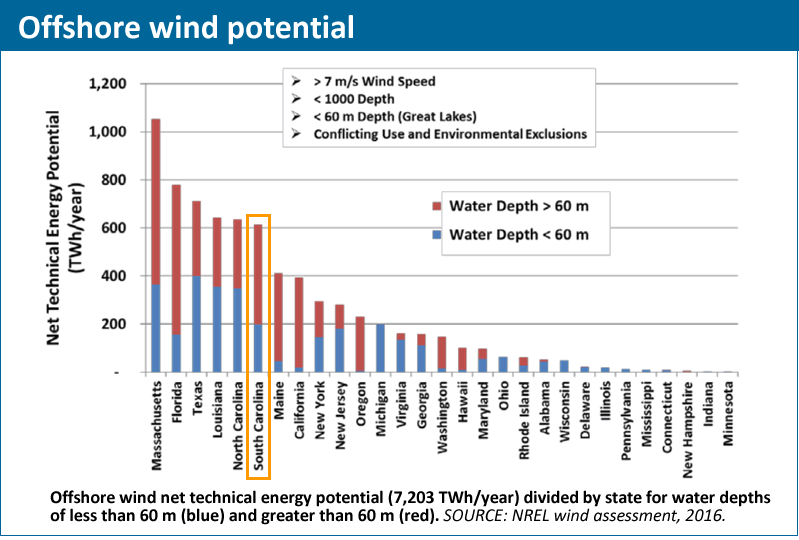
Renewed interest in renewable energy
The 2019 legislative session ended with a big boon to renewable energy in the state: The S.C. Energy Freedom Act, signed into law by Gov. Henry McMaster this month. The law has been praised for its impact on the utility-scale and rooftop solar markets, but it isn’t limited to solar. The language of the act focuses on “renewable energy,” lead sponsor Sen. Tom Davis, R-Beaufort, said.
“If (energy) can be produced at a competitive price, then producers have the right to sell it and have it put on the grid,” Davis said.
But neither Davis nor co-sponsor Orangeburg Democratic Sen. Brad Hutto said wind power is on their radars.
“Nobody has actually come, over the last decade, and said, ‘This is something we should look at in South Carolina,’” Hutto said.
And federal solicitation in the four call areas off the South Carolina coast has found limited response as well. The U.S. Bureau of Ocean Energy Management (BOEM) opened solicitations in 2015 but nothing has moved forward in the four years since, indicating a sluggish start to bids.
Wind burn
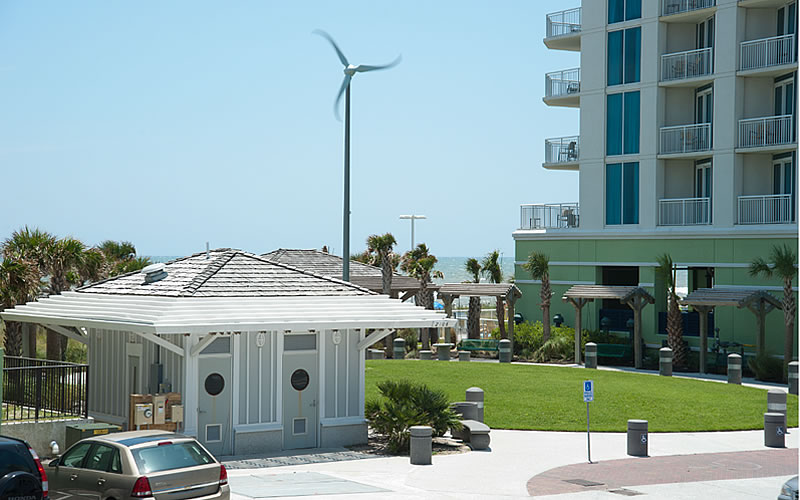
State-owned utility Santee Cooper was among the first to look at utility-scale wind power in the Palmetto State. Starting in 2005, the utility began researching wind speeds around the state, including offshore locations, according to Santee Cooper Corporate Communication Manager Mollie Gore. (Newer research confirms the best and most constant wind available in the state is offshore.)
But after spending several years and a couple million dollars, the utility scuttled its wind-power plans.
“We couldn’t justify it,” Gore said. “Nobody else was jumping on top of either.”
During that time, Santee Cooper became a minority partner in a nuclear expansion at the V.C. Summer site in Jenkinsville. That project incurred $9 billion in debt and was canceled in 2017.
Meanwhile, the utility’s research led to a single, demonstration wind turbine that barely generates enough electricity for half a house’s needs. Erected in 2010 in North Myrtle Beach, it was the state’s first utility-owned turbine. It isn’t offshore, but it is on the shoreline.
Santee Cooper remains guarded over the cost of offshore wind, Gore said. It’s a sentiment shared by one of the state’s leading environmental champions.
S.C. Coastal Conservation League’s Energy and Climate Program Director Eddy Moore said the nonprofit once had a keen interest in offshore wind, but in recent years, his program has shifted focus to solar. He said the cost, coupled with pressing legal matters that threatened the solar industry, demanded the nonprofit’s full attention.
Other negatives included perceptions that offshore wind kills birds, turbines can’t withstand hurricane force winds and that they deter tourism. Industry experts debunked all three claims.
Top world lab in S.C.
South Carolina already has 15 manufacturers building parts for the wind energy industry, according to American Wind Energy Association.
Industry experts also say the state has a critical asset: the SCE&G Energy Innovation Center, a wind turbine research facility in North Charleston. The Clemson University laboratory, launched in 2009, is named for the private utility that partnered with Santee Cooper on the 2007 nuclear project.
Clemson Professor of Electrical and Computer Engineering Johan Enslin said the world-leading lab tests and researches not only mechanical and durability of wind turbines, but also how to integrate and amplify the intermittent power generated by the renewable energy into the existing grid infrastructure.
What other states are doing
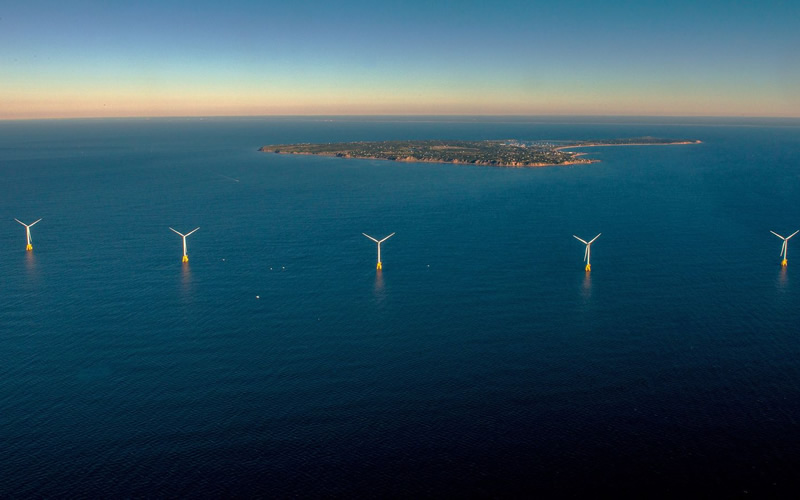
But other states are investing more. In addition to making renewables part of state energy plans, some are focusing on making their ports more accessible.
Virginia is studying how to upgrade its ports to accommodate wind power manufacturers, and North Carolina’s proposed executive budget includes $300,000 set aside for a port analysis and supply chain study, according to Forrer.
“South Carolina needs to take some purposeful and intentional steps in order to signal to this industry that it is serious about attracting the jobs and the industry,” Forrer said.
Industry experts said investing in wind power is akin to investing in the automotive or aeronautics sectors, both of which have received state support in the last 30 years. Enslin urged South Carolina should start its “investment strategy” now.
“If you wait and wait, the other states are going to take over this market and all the industry will flock there,” he said.
But Davis said offshore wind — like any other renewable — will have its future dictated by developers not the state.
“We’re letting the markets dictate what power comes to the grid,” he said.
- Have a comment? Send to: feedback@statehousereport.com
NEWS BRIEFS
Few items struck from state budget, other updates

By Lindsay Street, Statehouse correspondent | Less than a half percent of the state’s $9.3 billion budget was struck down by gubernatorial vetoes this week.

Gov. Henry McMaster struck 28 line items totalling $40.7 million from the 2019-20 spending plan. Any veto overrides by the General Assembly likely won’t be taken up until the January 2020 session.
Here are five notable vetoes that McMaster said lacked necessary transparency in the budgeting process. He said the spending did not have “disclosure or explanation, justification, description, purpose, location or amount” in the line items. (As such, it’s hard to explain what he was vetoing, based on his veto message.)
- A $6.5 million grants program through the Department of Parks, Recreation and Tourism;
- $3.4 million for historic preservation at the Department of Archives and History;
- $2 million for community development grants;
- $3.5 million for medical contracts at the Department of Health and Human Services; and,
- $2 million for local law enforcement grants.
“These earmarks should be publicly disclosed and debated through the normal appropriations process and allowed to stand on their own merits, not rolled up into one line thereby sheltered from scrutiny,” McMaster repeated in each line item veto message.
An $11 million case management system upgrade for the judicial department was also vetoed.
“The time has now come for our courts, solicitors, attorneys, advocates, law enforcement and criminal justice agencies to embrace a modern statewide uniform case management system. I look forward to funding this type of proposal in my next executive budget,” he wrote.
McMaster also vetoed a $1.7 million project to sink the USS Clamagore off the coast of Charleston to create a sport fishing reef. He said artificial reefs for alleviating the threat of coastal flooding is “a meritorious idea” but he didn’t want taxpayer-funded leisure projects that had limited public access.
And McMaster signaled interest in reforming the state’s “piecemeal sales tax exemptions” but vetoing a one-year sales tax exemption on foods manufacturing equipment.
- Read our previous coverage on how Republican lawmakers are looking to transform the state’s tax code in 2020.
- Read the entire veto message here.
In other news:
Entertainment industry flees red-state laws. South Carolina has gained a Netflix show after the streaming media giant balked at North Carolina’s transgender bathroom policy. Now, as other entertainment looks at leaving Georgia over its abortion restrictions, South Carolina is looking at enacting similar legislation. Read the story in The Charleston City Paper.
Alimony work remains on agenda for 2020. In South Carolina, lawmakers are working on reforming its longstanding alimony laws. According to a recent piece by WRHI, work will continue over the break and begin in earnest at the start of the 2020 session.
Interstate 73 gets infamous. A recent article in American Thinker has called Interstate 73 “a poster child for the government ineptitude.” The interstate project gained attention from President Donald Trump during the 2016 campaign. One contractor said: “The state government would rather have the project remain stranded for another 30 years than yield their ownership to a private entity.” Read the article here.
SCforEd turns one. Last May, a Facebook group started out of teacher frustration in the state. Now, SCforEd has grown to more than 30,000 members. This week, the group’s founders reflected on the grassroots organization, highlighting the teacher pay raises and other education reform efforts in Columbia. “Though it’s not over yet, the commitment and passion for education from these state servants gives us faith that meaningful reform will make the lives of children better in our state,” the group wrote in a statement.
Anti-teen pregnancy group gathers June 4-6. The S.C. Campaign to Prevent Teen Pregnancy is hosting its 20th Annual Teen Pregnancy Prevention Conference June 4 to June 6 at the North Charleston Marriott. Keynote and plenary speakers include Judge Glenda Hatchett, a TV personality and successful attorney, and Dr. Elizabeth Schroeder, an award-winning educator, trainer and author in the areas of sexuality education pedagogy. Learn more here.
Ceremonial signing for Panthers’ incentives planned. Gov. Henry McMaster and representatives from NFL team the Carolina Panthers will gather Wednesday in Rock Hill for a ceremonial signing of the incentives package aimed at luring the team’s headquarters south of the border.
Tracking the candidates. Following in the footsteps of this calendar and The Post and Courier’s newly launched candidate tracker, The State newspaper also launched its candidate tracker this week. See it here. In related, FiveThirtyEight released an interactive map of where Democrats and Republicans live in the United States, showing some stark divides even in neighboring communities. See the map here.
2020 candidate calendar
 Throughout the campaign season, we are working to keep South Carolina informed of candidate events in the state. Have an event you want us to know about? Email us at 2020news@statehousereport.com. In the coming days:
Throughout the campaign season, we are working to keep South Carolina informed of candidate events in the state. Have an event you want us to know about? Email us at 2020news@statehousereport.com. In the coming days:
- Bennet: Democratic hopeful and U.S. Sen. Michael Bennet of Colorado is making his first trip to the state with campaign stops May 31 and June 1. At 6 p.m. May 31, Bennet will appear at the home of former Democratic National Committee Chairman Don Fowler for a party. The event will be followed by another party at the home of Sabrina Dailey in Fort Mill at 2:30 p.m. June 1.
- De Blasio: New York City Mayor Bill de Blasio, another Democratic hopeful, will return to Orangeburg for a third time. On June 1, he will speak 10 a.m. at Williams Chapel AME Church starting at 10 a.m.
- On TV: The Black Economic Alliance will host a presidential forum noon to 4 p.m. June 15 for some Democratic candidates at the Charleston Music Hall. Tickets required, but free. To be aired on BET.
- Hear from 18 of the Democratic candidates. On June 22, the S.C. Democratic Party will have its annual state convention. Eighteen of the 23 declared Democratic presidential hopefuls are signed up to speak. Read more.
Looking ahead
Click below for other items coming up in the Statehouse:
- Have a comment? Send to: feedback@statehousereport.com
BRACK: A hotter South Carolina has some steamy policy impacts

By Andy Brack, editor and publisher | Regardless of whether you are a climate change denier or someone who believes that science shows the globe is warming, there’s one thing we can all agree on: It’s been hot. Real hot.
 Summer’s annual blast furnace of high heat and humidity came earlier than expected this year as the middle of the country dealt with lots of flooding and a whole bunch of freaky tornadoes.
Summer’s annual blast furnace of high heat and humidity came earlier than expected this year as the middle of the country dealt with lots of flooding and a whole bunch of freaky tornadoes.
In South Carolina, lawns are browning, not greening. Crops are struggling. Officials say a third of the state is experiencing some kind of drought. They’re warning people that drought conditions can lead to wildfires and are strongly discouraging outdoor burning.
In other words, this heat is impacting how we live. One woman this week blamed heat for the larger number of cars on the side of the road with flat tires. Another recently bought a four-wheel-drive truck, instead of a car, to deal with increasing flooding in the Lowcountry.
And people are staying inside more. Just about everyone is saying quiet prayers to a guy whose name they don’t know – Willis Carrier – but whose invention they couldn’t live without – the modern air conditioner.
All of this heat seems to be coming sooner and staying around longer. The Union of Concerned Scientists projects if carbon emissions into the atmosphere continue to increase, we’ll have more hot days, particularly in the Southeast. In coming years, according to a 2018 report, the Southeast could have 40 to 50 additional days of extreme heat where temperatures are over 90 degrees Fahrenheit. Yikes.
If you are someone who thinks long-term and about broader impacts, it’s natural to wonder how expanding summer heat may affect how we live in South Carolina over time.
Water. The Palmetto State has been blessed with lots of good, clean water. But with more development on the way and more people sucking down gallons, the water table will be impacted. More heat likely will cause more drought, which will lower the water table, too. As such, the state really needs a revamped, modern water policy that outlines how state waters can be used collaboratively.
Crops. With more heat and drought, agriculture will be affected. We’ve always been able to grow lots of food, although the vast majority is sold to out-of-state interests. It might be a good idea for South Carolina to focus more on feeding South Carolinians and embracing the “buy local” movement in new ways. This could create new streams of revenues for remaining farmers and, perhaps, embolden more people to enter the sagging industry.
Infrastructure. One impact of a warmer globe is sea-level rise. That means communities in the Lowcountry (it’s called “low” for a reason) will have to budget more to deal with flooding and keeping the sea at bay. In Charleston, for example, dealing with high tides that soak streets more often has become a political issue that is impacting local races.
Power. If it’s hotter and people are cranking the air conditioning more often, they’re probably using more power, the use of which tends to cause more air pollution. From a policy perspective, that suggests sun-rich South Carolina should be investing in more green power, such as solar or wind, to generate what people need to stay cool. And that means passing more bills, such as a residential solar measure recently approved by the General Assembly to expand solar usage by allowing more people to sell extra power to utilities.
Disease and animals. Hotter weather for longer spells means there’s more potential for negative health impacts, such as more asthma, and the spread of more diseases, particularly mosquito-borne maladies. Forestry, one of the state’s top products, may be threatened as more bad insects thrive. Some species will move north for cooler climes and some will die, reducing biodiversity. Remember recent stories of a manatee or two in South Carolina waters? That’s certainly not normal.
South Carolina legislators and policy wonks need to start thinking long and hard about how to harden our infrastructure systems and prepare for a hotter state. Over time, expanding heat is going to cost more money, but getting ready now will save money over time.
- Andy Brack’s new book, “We Can Do Better, South Carolina,” is now available in paperback via Amazon.
- Have a comment? Send to: feedback@statehousereport.com.
SPOTLIGHT: S.C. Farm Bureau
 Statehouse Report is provided for free to thousands of subscribers thanks to the generosity of our underwriters. Today we shine a spotlight on our newest underwriter, S.C. Farm Bureau. It is a grassroots, non-profit organization that celebrates and supports family farmers, locally-grown food and rural lands through legislative advocacy, education and community outreach.
Statehouse Report is provided for free to thousands of subscribers thanks to the generosity of our underwriters. Today we shine a spotlight on our newest underwriter, S.C. Farm Bureau. It is a grassroots, non-profit organization that celebrates and supports family farmers, locally-grown food and rural lands through legislative advocacy, education and community outreach.
S.C. Farm Bureau’s alliance of nearly 100,000 members includes everyone from foodies and fishermen to lawyers, restaurateurs, entrepreneurs, community leaders, and of course, farmers. By connecting farmers to the larger community, the organization cultivates understanding about agriculture’s importance to our local economies. The S.C. Farm Bureau explains its mission: “We deepen our collective knowledge of who, where and how food grows. We empower people to make informed choices. We grow mutually-beneficial relationships. And, we ensure the future of the family farms, locally-grown food and the rural South Carolina lands we love.”
- To learn more about S.C. Farm Bureau’s programs, click here.
- To view media and publications, click here
- For policy and legislation, click here.
FEEDBACK
Brack nailed it on a budget gimmick
To the editor:
![]() Your column in the Greenwood Index Journal is a great public service! I try not to ever miss reading it. You offer essential information about our state politics in a non-partisan way which is incredibly refreshing!
Your column in the Greenwood Index Journal is a great public service! I try not to ever miss reading it. You offer essential information about our state politics in a non-partisan way which is incredibly refreshing!
I particularly liked your candid comments on expenditures. I totally agree with your term “gimmick” to describe the $50 being paid to each taxpayer. Sixty-seven million dollars would not go very far toward fully funding public education, but the need is so dire practically every penny would help.
Thank you so very much for shining an objective light on the actions of our State Legislators each week!
— Paula Taylor, Greenwood, S.C.
Send us your thoughts … or rants
We love hearing from our readers and encourage you to share your opinions. But you’ve got to provide us with contact information so we can verify your letters. Letters to the editor are published weekly. We reserve the right to edit for length and clarity. Comments are limited to 250 words or less. Please include your name and contact information.
- Send your letters or comments to: feedback@statehousereport.com
Two-story house
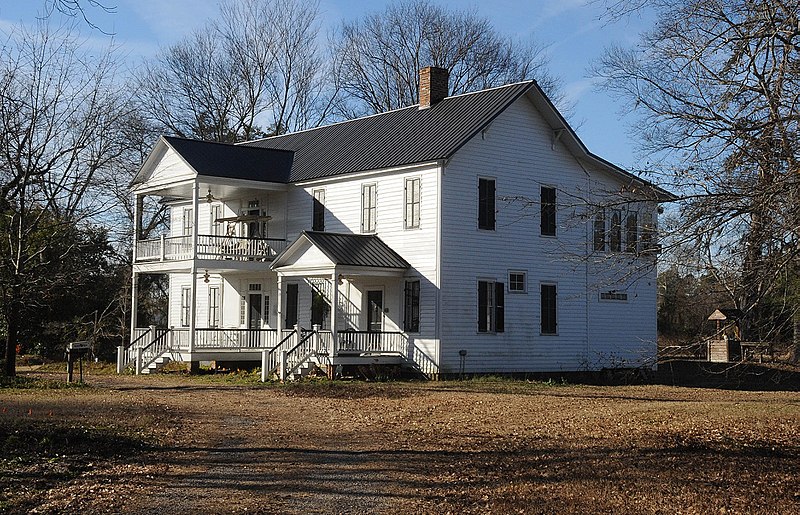
This might pose some problems for longtime sleuths, but maybe not. Where’s this house and why is it important. (Hint: It’s, umm, in South Carolina.) Send your guess about the location of this photo to feedback@statehousereport.com. And don’t forget to include your name and the town in which you live.
Our previous Mystery Photo
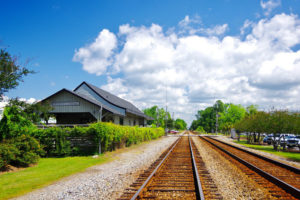 The subject of our May 24 mystery, “Could be anywhere, but where specifically is this?,” looks like a lot of old train depots from coast to coast, but this building is in Moncks Corner.
The subject of our May 24 mystery, “Could be anywhere, but where specifically is this?,” looks like a lot of old train depots from coast to coast, but this building is in Moncks Corner.
Kudos to these alert detectives: George Graf of Palmyra, Va.; Don Clark and Bill Segars, both of Hartsville; Jay Altman of Columbia; and Will Williams of Aiken.
Thanks also to Graf for this context: “According to 3dwarehouse.sketchup.com, although Moncks Corner dates back to 1735, the modern town began to take shape when the railroad arrived. In 1853, the North East Railroad began laying new tracks and Moncks Corner became a scheduled stop in 1856. Built in 1884, the first Depot was across the street from the current location. After its destruction by fire in 1915, the existing building was constructed.
“For years, the Depot was the center of Moncks Corner, as depots were for small towns all across America. As the hub for local businesses and government, mail and news of the outside world came through the Depot and local farmers used the Depot to send their crops to market. After World War II, with declining rail travel and increasing auto and truck traffic, many depots were resigned to neglect, vandalism, and the wrecking ball. Moncks Corner wisely chose to save its important landmark and infuse it with life. Renovated in 2000 and serving as the Town’s Visitor and Cultural Center, the Depot provides a place to hold special events and classes, as well as a gift shop. The Depot has come full circle, once again serving as a commercial and social center for Moncks Corner.”
- Send us a mystery: If you have a photo that you believe will stump readers, send it along (but make sure to tell us what it is because it may stump us too!) Send to: feedback@statehousereport.com and mark it as a photo submission. Thanks.
S.C. ENCYCLOPEDIA
HISTORY: Tobacco barns
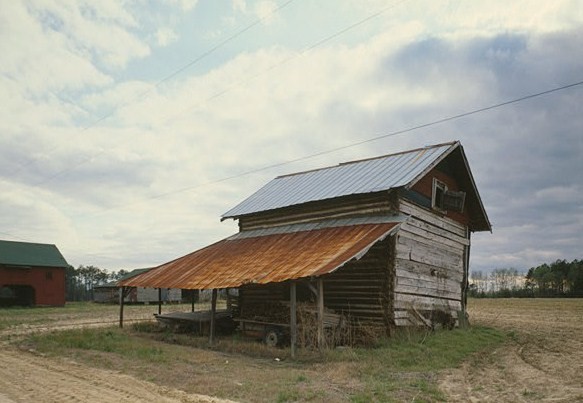
S.C. Encyclopedia | Tobacco curing barns have helped to define the Pee Dee landscape since the 1880s. Unlike in Burley-tobacco regions such as Kentucky, where ventilated air-drying sheds were used, in South Carolina bright leaf tobacco was flue-cured by artificial heat. Thus, curing barns were tightly constructed to maintain high temperatures during the four- to five-day curing process. A brick furnace circulated heat through a network of stove pipes (flues) that ran parallel to and a few inches above the floor. Tobacco leaves were strung on wooden sticks and hung overhead on rows of tier poles. Early tobacco barns were generally sixteen feet square and twenty feet high with four “rooms” of tier poles. As crop yields increased in the 1940s and 1950s, twenty-foot square, five-room barns became the norm. Typically, the outside walls were skirted by a shed roof that sheltered hanging and stringing.
Curing-barn architecture evolved slowly. Until the 1940s most farmers built their barns from homegrown materials: stout logs chinked with clay and roofed with hand-hewn shingles. Tier poles were fashioned from slender pine saplings. Later, farmers purchased dressed lumber and covered it with store-bought asphalt sheathing. Handmade shingles bowed to tin roofing. In the 1950s and 1960s a few farmers invested in cement block construction. Curing fuels and technologies also evolved. At first, tobacco growers fueled their brick furnaces with firewood cut from their own forests. By the 1950s, however, kerosene and propane gas burners were commonplace in the Pee Dee.
As tobacco culture mechanized in the late 1960s, all-metal, rectangular “bulk” barns began replacing traditional barns. Bulk curing eliminated several labor-intensive tasks and cured more leaves with less fuel. Automated controls greatly simplified curing. By 1990 essentially all of the state’s tobacco crop was bulk cured. At century’s end, a few examples of wooden tobacco barns were being preserved as heritage assets in the Pee Dee.
— Excerpted from an entry by Eldred E. Prince Jr. This entry may not have been updated since 2006. To read more about this or 2,000 other entries about South Carolina, check out The South Carolina Encyclopedia, published in 2006 by USC Press. (Information used by permission.)
Available in paperbrack, err, paperback
 Now you can get a copy of editor and publisher Andy Brack’s We Can Do Better, South Carolina! ($14.99) as a paperback.
Now you can get a copy of editor and publisher Andy Brack’s We Can Do Better, South Carolina! ($14.99) as a paperback.
The book of essays offers incisive commentaries by editor and publisher Andy Brack on the American South, the common good and interesting South Carolina leaders, such as former U.S. Sen. Fritz Hollings, civil rights advocate Septima Clark, former S.C. Gov. David Beasley and more. There also are discussions on civil rights struggles with which the Palmetto State continues to grapple. as well as commentaries on politics, governments, the hangovers of South Carolina’s past and her future opportunities.
We Can Do Better, South Carolina! is also available exclusively as a Kindle book for $7.99. Click here to purchase a Kindle copy.
- If you have a comment or questions about the book, please let us know at: feedback@statehousereport.com.
ABOUT STATEHOUSE REPORT
Statehouse Report, founded in 2001 as a weekly legislative forecast that informs readers about what is going to happen in South Carolina politics and policy, is provided to you at no charge every Friday.
Meet our team
- Editor and publisher: Andy Brack, 843.670.3996
- Statehouse correspondent: Lindsay Street
More
- Mailing address: Send inquiries by mail to: P.O. Box 22261, Charleston, SC 29407
- Subscriptions are free: Click to subscribe.
- We hope you’ll keep receiving the great news and information from Statehouse Report, but if you need to unsubscribe, go to the bottom of the weekly email issue and follow the instructions.
- © 2019, Statehouse Report. All rights reserved.



Pingback: Offshore wind in S.C. in peril thanks to memo, group says - Book Publishing